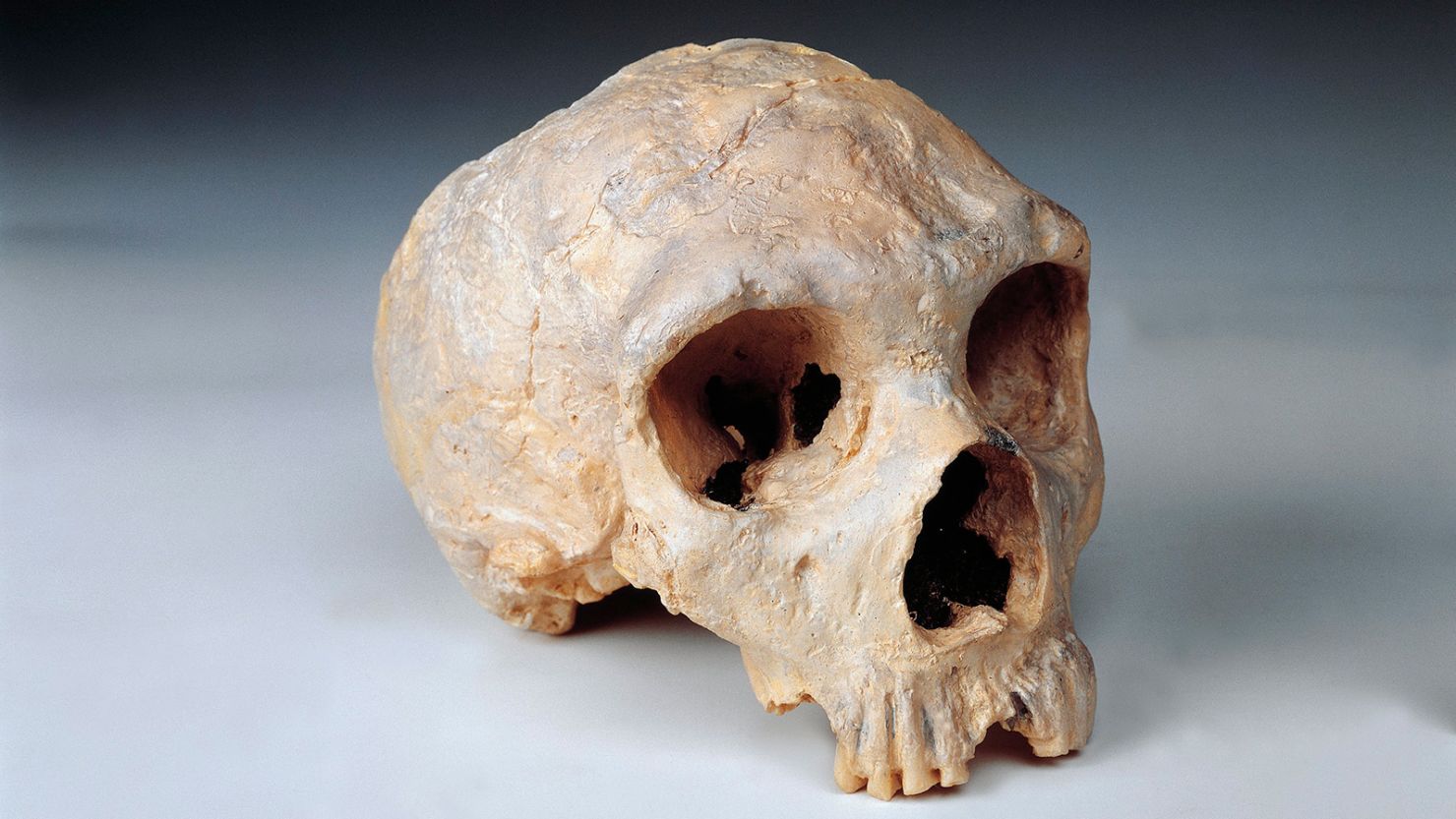Sign up for CNN’s Wonder Theory science newsletter. Explore the universe with news on fascinating discoveries, scientific advancements and more.
From studying fossilized skulls, scientists know that the size of a Neanderthal’s brain was the same as, if not slightly bigger than, that of a modern human. However, researchers have known little about Neanderthal brain development because soft tissue doesn’t preserve well in the fossil record.
Now, an intriguing study released September 8 has revealed a potential difference that may have given modern humans, or Homo sapiens, a cognitive advantage over the Neanderthals, the Stone Age hominins who lived in Europe and parts of Asia before going extinct about 40,000 years ago.
Scientists at the Max Planck Institute of Molecular Cell Biology and Genetics in Dresden, Germany, said they have identified a genetic mutation that triggered the faster creation of neurons in the Homo sapiens brain. The Neanderthal variant of the gene in question, known as TKTL1, differs from the modern human variant by one amino acid.
“We’ve identified a gene that contributes to making us human,” said study author Wieland Huttner, professor and director emeritus at the institute.
When the two versions of the gene were inserted into mice embryos, the research team found that the modern human variant of the gene resulted in an increase in a specific type of… cell that creates neurons in the neocortex region of the brain. The scientists also tested the two gene variants in ferret embryos and lab-grown brain tissue made from human stem cells, called organoids, with similar results.
The team reasoned that this ability to produce more neurons likely gave Homo sapiens a cognitive edge unrelated to overall brain size, suggesting that modern humans have “more neocortex to work with than the ancient Neanderthal did,” according to the study published in the journal Science.
“This shows us that even though we do not know how many neurons the Neanderthal brain had, we can assume that modern humans have more neurons in the frontal lobe of the brain, where TKTL1 activity is highest, than Neanderthals,” Huttner explained.
“There has been a discussion whether or not the frontal lobe of Neanderthals was as large as that of modern humans,” he added.
“But we don’t need to care because (from this research) we know that modern humans must have had more neurons in the frontal lobe … and we think that that is an advantage for cognitive abilities.”
‘Premature’ finding
Alysson Muotri, professor and director of the Stem Cell Program and Archealization Center at the University of California San Diego, said while the animal experiments revealed “quite a dramatic difference” in neuron production, the difference was more subtle in the organoids. He was not involved in the research.
“This was only done in one cell line, and since we have huge variability with this protocol of brain organoids, it would be ideal to repeat the experiments with a second cell line,” he said via email.
It was also possible the archaic version of the TKTL1 gene was not unique to Neanderthals, Muotri noted. Most genomic databases have focused on Western Europeans, and it’s possible human populations in other parts of the world might share the Neanderthal version of that gene.
“I think it is quite premature to suggest differences between Neanderthal and modern human cognition,” he said.
Archaeological finds in recent years have suggested that Neanderthals were more sophisticated than pop culture depictions of brutish cavemen might suggest. Our ancient relatives knew how to survive in cold and warm climates and used complex tools. They also made yarn, swam and created art.
Study coauthor and geneticist Svante Pääbo, director of the Max Planck Institute for Evolutionary Anthropology in Leipzig, Germany, pioneered efforts to extract, sequence and analyze ancient DNA from Neanderthal bones.
His work led to the discovery in 2010 that early humans interbred with Neanderthals. Scientists have subsequently compared the Neanderthal genome with the genetic records of living humans today to see how our genes overlap and differ: TKTL1 is just one of dozens of identified genetic differences, while some shared genes may have implications for human health.





